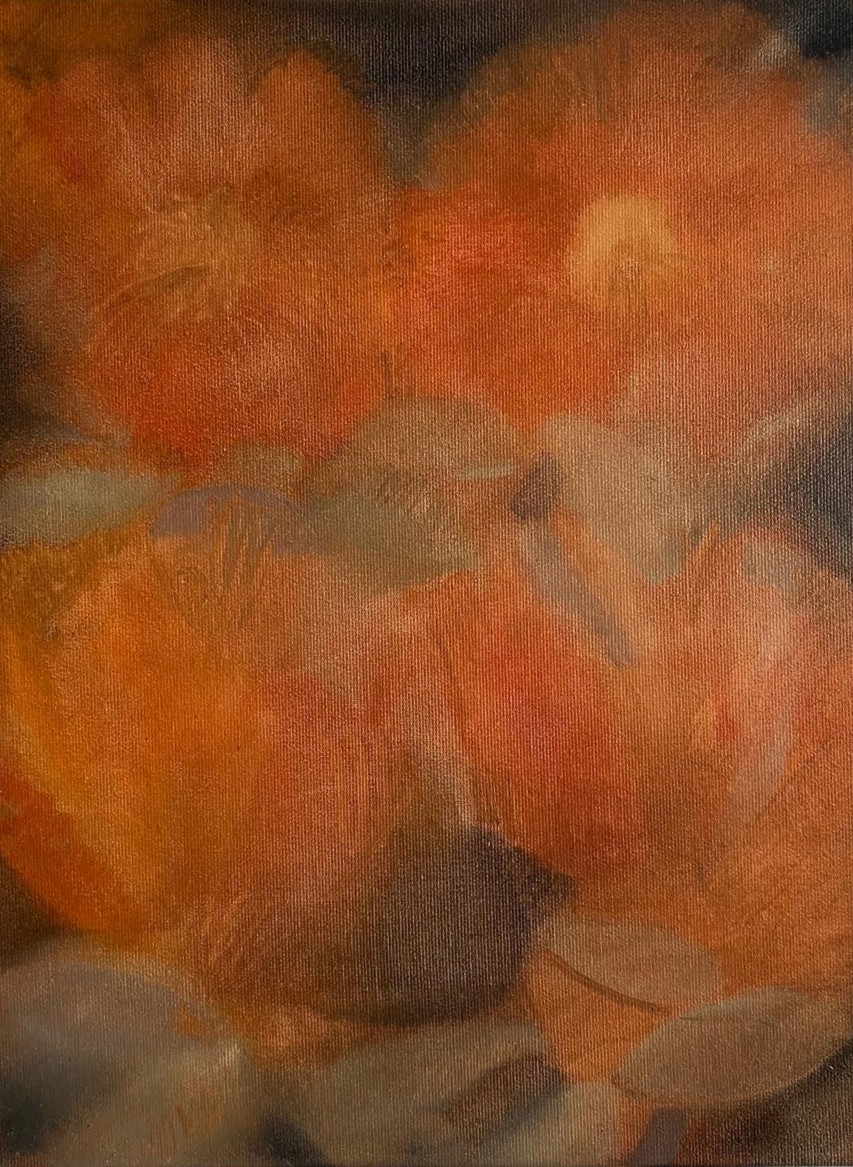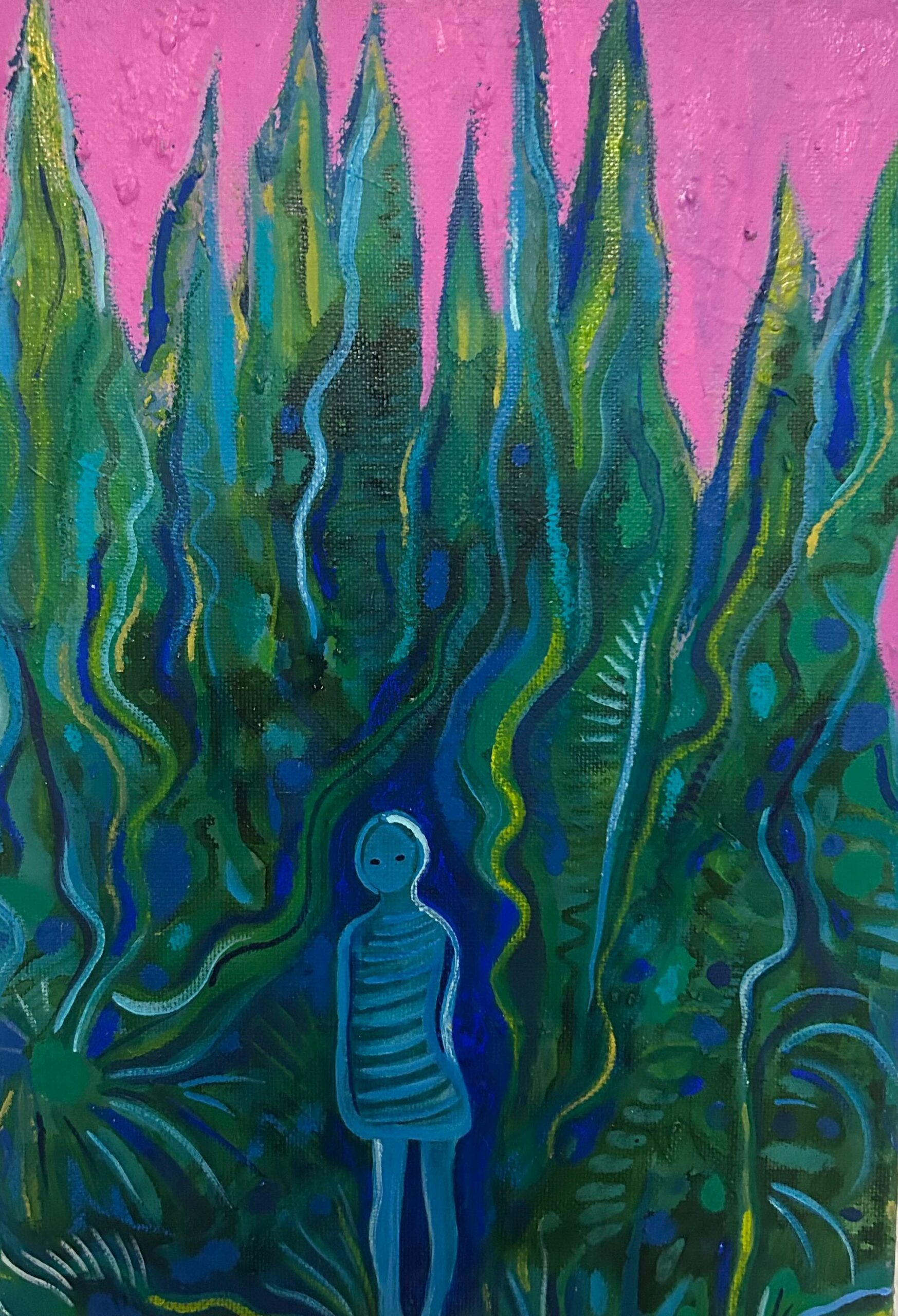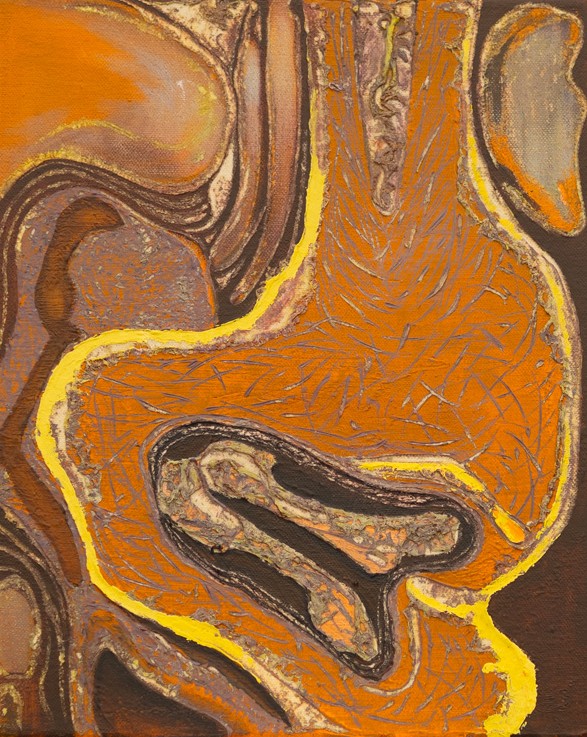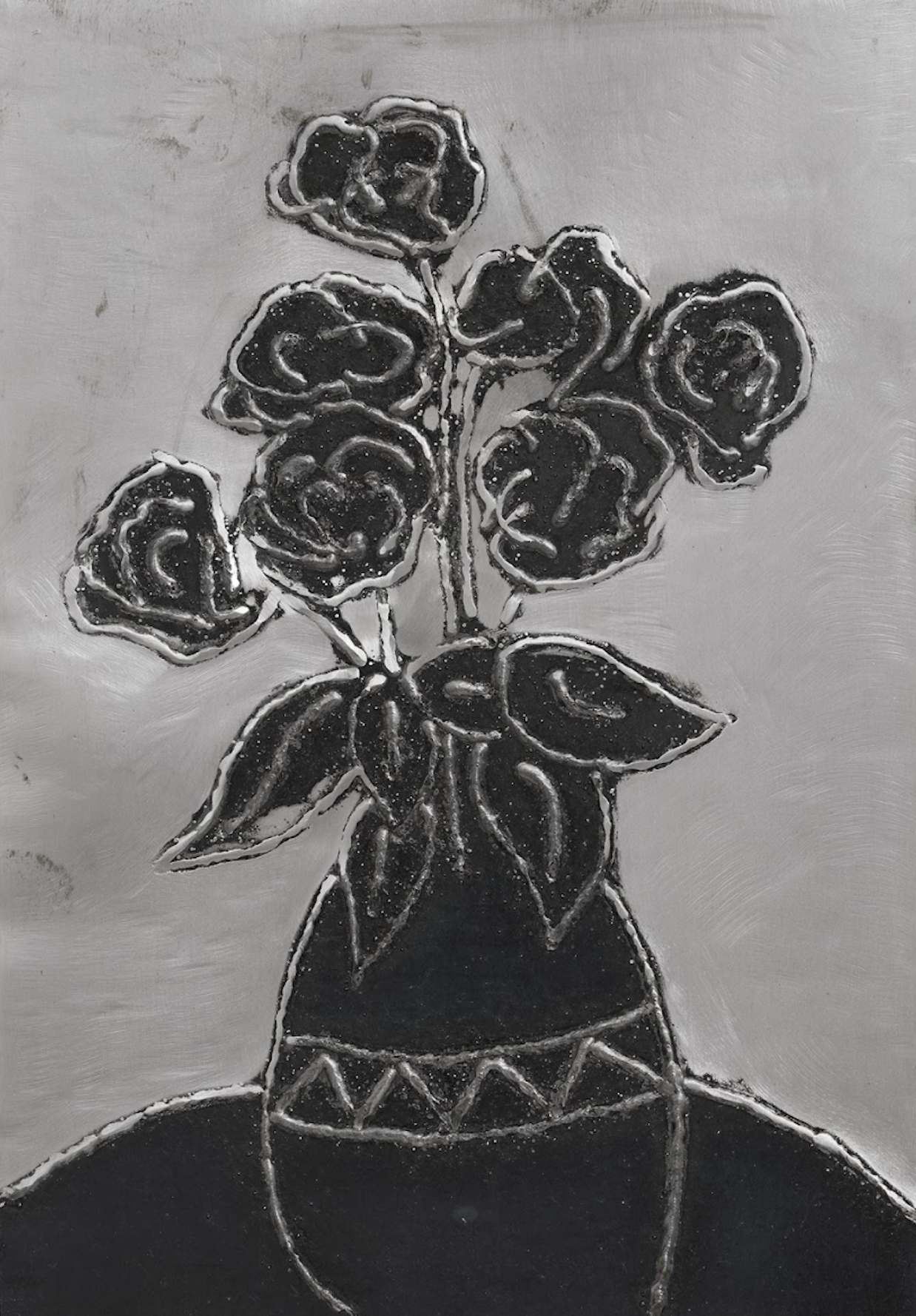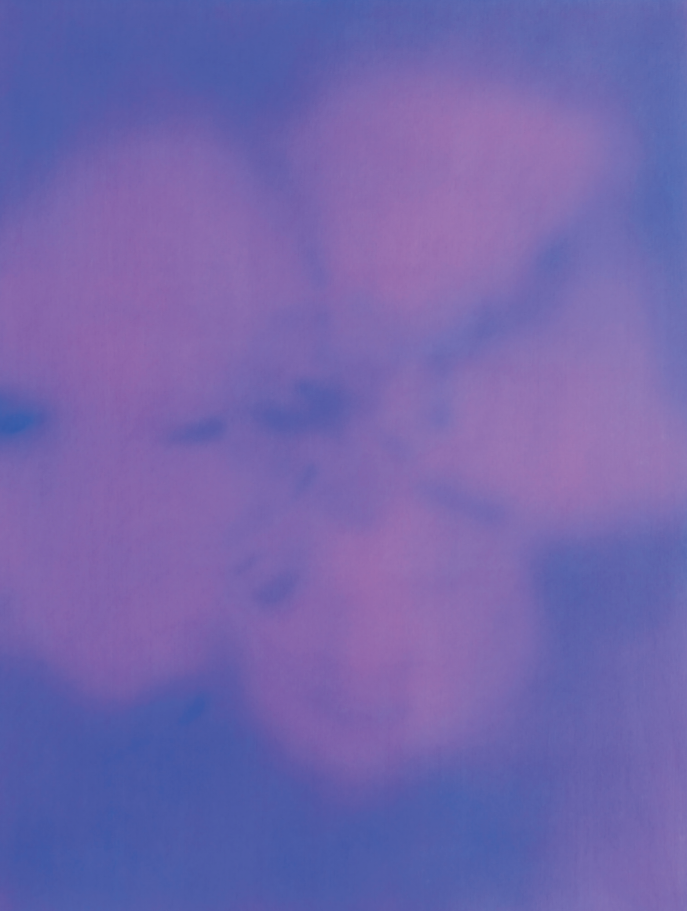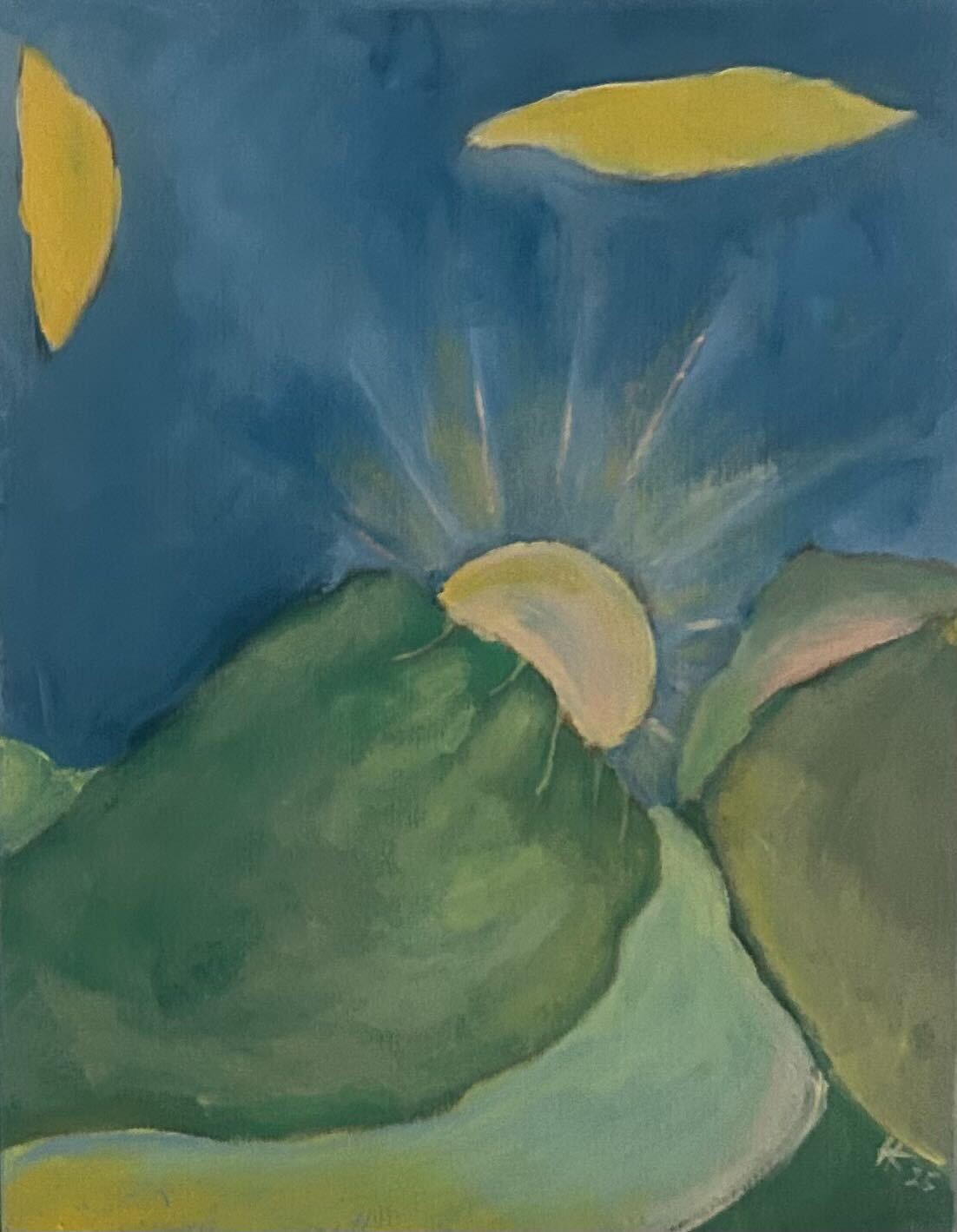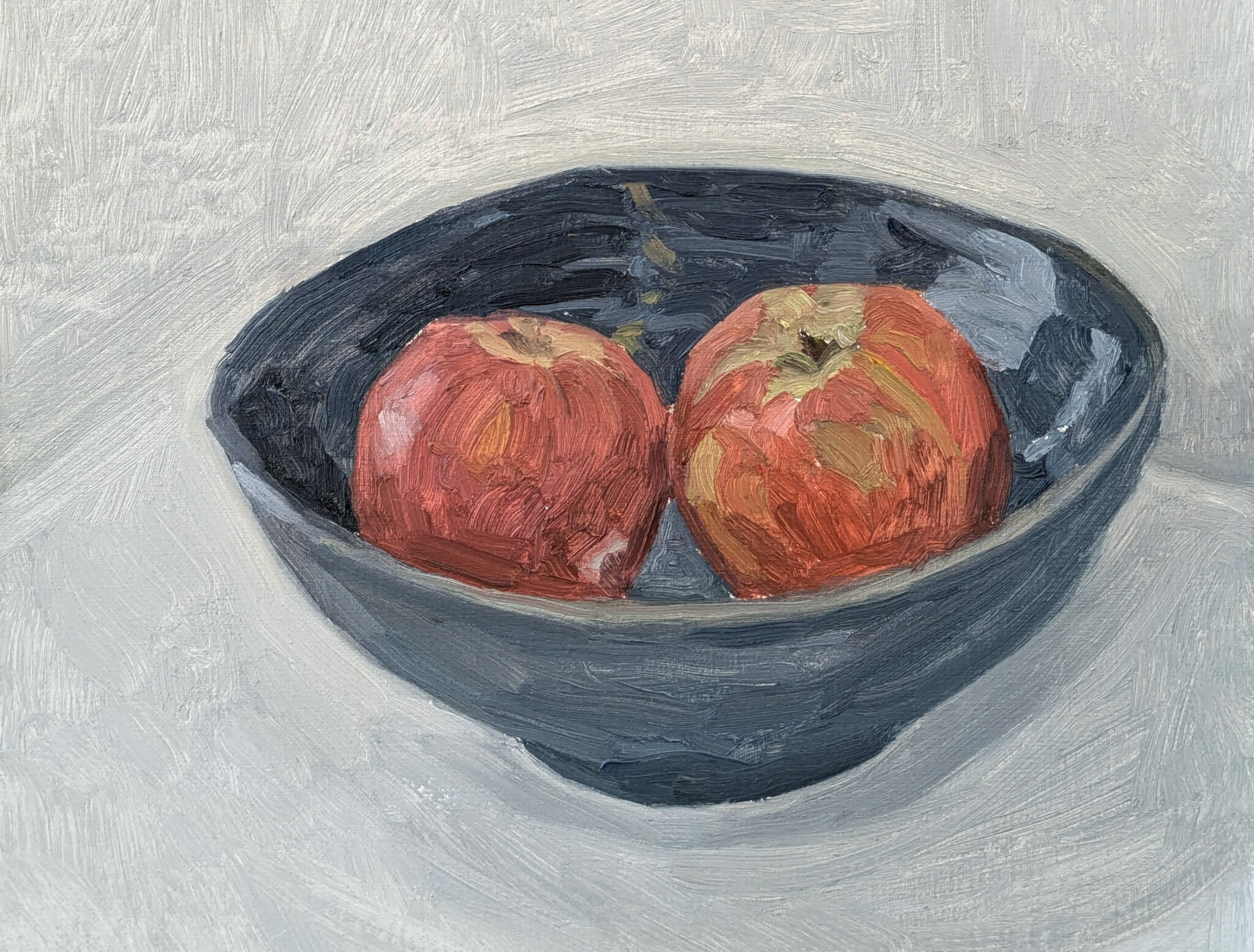BEE CIRCUS
The works by
Mateo Revillo, presented at pal project this autumn, seem to surge from hidden depths, emerging from earth and fire. Created from natural wax using age-old techniques, his encaustic paintings and lost-wax sculptures are charged with elemental forces. Worked while hot, in a state of molten fusion, they pulse with vibrant energy but teeter on the brink of erosion: as the wax cools, it hardens and becomes brittle, evoking here and there a burst pomegranate, barely formed cornucopias, or a winged sculpture crafted from a wax tray lid. This fragile balance evokes both the ephemeral materiality of everyday objects and the inner instability of the idiosyncratic artist, perpetually in search of a form that keeps shifting.
Large, dark, and abyssal canvases reveal a cosmic, cavernous universe, studded with meteors, signs, and archetypal imprints. In places, the material builds up in relief, allowing waxy chimneys to emerge on the surface, like deadly emanations. Elsewhere, canvases streaked with vivid, tormented stripes flare up like flames. The paint seems to pulse, alive and trembling. In their repetitive insistence, these stripes challenge the viewer’s gaze, erasing any sense of depth or escape. The unmistakable presence of a snail—a symbol of eternal return, resurrection, and the inescapable cycle of things—lodges itself, as if in defiance, within this battered, impenetrable plane.
Like a matador of painting, the Spanish artist has spent years engaged in an analytical deconstruction of an iconic Western object: the easel painting. Format, surface, generative process, and pictorial techniques are all scrutinized through his reflexive practice. One large, irregular canvas, ruthlessly nailed up, flaunts its tears and appears flayed, like a punished Marsyas chastened for his audacity. Initially crafted on a square base of plaster and cement coated with molten wax, the piece was later shattered, fragmented, and reassembled into a shaped canvas. At the end of this process, the surface unfolds like origami, "fold upon fold," echoing baroque thought and its operative mode as unveiled by Deleuze in his study of Leibniz.
Relentlessly questioning authorship and the role of the artist, Mateo Revillo seeks to counter the painter’s authority by creating his pieces through a series of jerky, repetitive gestures, as if he were replicating the frantic flight of bees, whose precious wax forms the primary material of his work. In this way, the painter effaces himself, transforming into a tireless worker bee whose instinctive actions seem to generate acheiropoietic images. At the center of the exhibition, a massive phallic sculpture, pointing its stinger skyward as if ready for flight, reinforces the analogy between artist and pollinating insect. Yet the wax-crafted organ is half-broken, revealing a precarious masculinity. The artist walks a fine line, like Icarus, who, after fashioning waxen wings, dared to soar toward the sun until the heat melted his feathers, plunging him into the Mediterranean.
With their ascending forms hinting at the dizzying dream of flight, the exhibition’s works offer a caution against the creator’s hubris and the beguiling illusion of his images. A small bacchanalian scene, found at a Neapolitan market, reveals, to the attentive eye, a clever counterfeit: a cheap print touched up by a forger to mimic an authentic canvas. Further along, a praying mantis nestled in a cocoon of tulle molts and transforms to mimic a dead leaf. Nature, too, contains simulacra, inhabited by fantastic creatures and chimeras—like *Sorginorratz*, the Marsh Dragonfly, glossed and bearing a cigarette, her name wryly alluding to the gilded youth populating art openings.
In this way, Mateo Revillo’s latest exhibition becomes “a perforated space, a trompe-l’œil embracing all scales of the simulacrum,” a work defined more by what it is not than what it is. An art by negation, suggesting that the artist situates himself within both the negative theology of the mystic
Dionysius the Areopagite and the existentialist negation of Ad Reinhardt, “denying art’s negation (...) over and over, tirelessly, until it once again becomes ‘right.’”
—
Roxane Ilias
